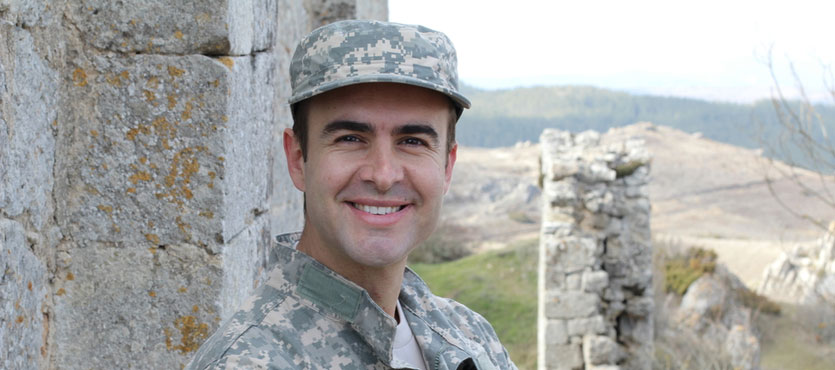The DoD’s heavy reliance on military contractors in places like Afghanistan is one reason why there are an estimated 44,000 troops deployed worldwide who are listed in an amorphous “unknown” category.
1.3 million active duty military personnel serve throughout the world, but this figure does not include military contractors, National Guard, or Reserve forces. In a press briefing unveiling the report, the DoD stated that there are 2,000 regular servicemembers in Syria, as opposed to the 500 in previous disclosures, and 5,200 troops in Iraq instead of the even 5,000 in earlier reports. Part of the reason for the confusion over exact numbers, according to Army Col. Rob Manning, is the DoD must “balance informing the American public with the imperative of operational security and denying the enemy any advantage.” Moreover, the DoD has no effective real-time tracking system for individual soldiers. But most significantly, contractors are not included in the official tallies.
Former President Barack Obama instituted troop caps in several places, but President Donald Trump has largely ended that practice and given field commanders more authority to raise the number of theater troops when necessary, so the 44,000 figure may get larger.
How We Got Here
The reliance on military contractors is not new. Even before the United States was a nation, almost a fifth of the soldiers in the Continental Army during the American Revolution were military contractors instead of regular servicemen (there were only men in the army at that time). The numbers stayed about the same throughout the 19th century, during such conflicts as the War of 1812, Mexican War, and Civil War.
Things changed dramatically in 1893. Seven years earlier, in Chicago, a labor demonstration turned violent when police and private detectives from the Pinkerton agency confronted workers marching for an eight-hour workday. Several people were killed and dozens injured. Apropos of nothing, some say that the Haymarket Square riot, which occurred on May 4, 1886, is today remembered by labor groups, and purportedly labor-friendly governments, as May Day.
Back to 1893. In response to Haymarket Square and other incidents, federal lawmakers passed the Anti-Pinkerton Act. This law forbade the federal government from retaining “An individual employed by the Pinkerton Detective Agency, or similar organization.” Government bureaucrats immediately interpreted this provision as banning all use of all paramilitary groups for all purposes. As a result, the number of contractors plummeted in the World Wars to less than 5%. The ones that served filled strictly combat support roles in rear areas, such as cooks, truck drivers, and mechanics.
During subsequent conflicts in the 1950s and 1960s, contractor use began inching up, setting the stage for one of the most significant developments in this area since the 1893 prohibition.
In 1977, the Fifth Circuit Court of Appeals issued its decision in United States ex rel Weinberger v. Equifax. A footnote challenged the bureaucrats’ interpretation of the Anti-Pinkerton Act as one that was contrary to both the plain language in the statute and its legislative history. Shortly thereafter, the General Accounting Office removed the broad prohibition, and private military contractor companies that began in the 1980s are now flourishing some 30 years later.
What Contractors Do
Today, contractors perform both combat and combat support roles. Militarily, contractors are much cheaper than regular soldiers. Although they earn more direct pay, the government incurs no training costs, long-term retirement or healthcare benefits, and no non-deployment costs (i.e. when the need in Afghanistan or wherever ends, contractors are released). These individuals also assume sentry duties and other obligations that free up regular servicemembers for other, more offensive-oriented tasks.
Contractors also serve as translators, technicians, and in other roles that regular servicemembers do not have the training or expertise to fill. Contractors also fill other support roles, such as cooks and truck drivers. Moreover, after combat operations end, these contractors often stay behind to support garrison troops and reconstruction efforts. Contractors often assume the lead in the latter field, once again because they have some skills that other people lack.
Where They are
Many people associate contractors with the conflicts in Southwest Asia, but military contractors serve in a number of other locales as well, such as:
- Europe: No one knows for sure, but there may be as many contractors in Italy, Germany, and other European nations as there are in Iraq and Afghanistan. Contractors in these areas often fill technical roles in cyber warfare and counterterrorism efforts.
- Japan: After World War II, the North Atlantic Treaty Organization allowed West Germany to rearm, and the Warsaw Pact did the same thing in East Germany. But the victorious Allies extended no such courtesy to Japan, which still has almost no military capabilities. So, national self-defense against possible Chinese or North Korean aggression is almost exclusively the province of American servicemembers and their supporting military contractors.
- South Korea: Speaking of North Korea, a state of war still exists on this peninsula. The Eighth Army is one of the DoD’s largest overseas forces, and so there is an intense need for both military and support contractors.
- Diego Garcia: There are no combat operations on this remote island, but it is still considered a war zone under the Defense Base Act because U.S. troops are stationed there. Since almost everything comes and goes via ship, most of the contractors are longshoremen.
Military contractors also serve in Kuwait, Haiti, Niger, and a number of other diverse locations throughout the world.
If you or a loved one was injured while serving as an overseas contractor, contact Barnett, Lerner, Karsen & Frankel, PA.

